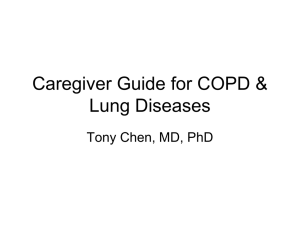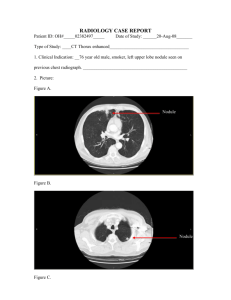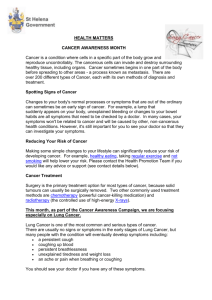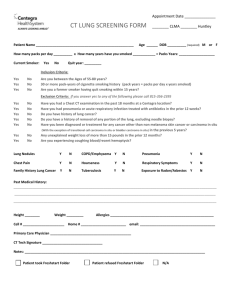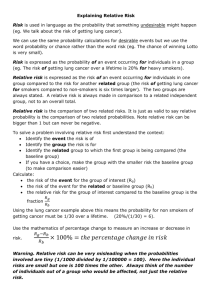Respiratory System Case Study Answers: Lung Cancer
advertisement
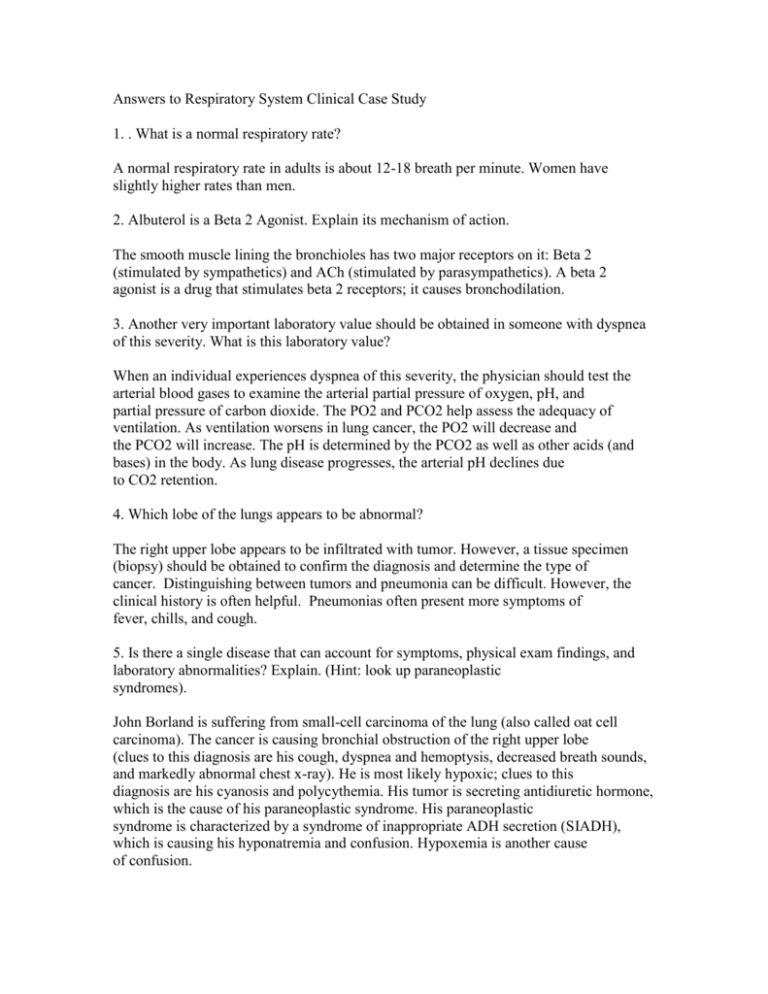
Answers to Respiratory System Clinical Case Study 1. . What is a normal respiratory rate? A normal respiratory rate in adults is about 12-18 breath per minute. Women have slightly higher rates than men. 2. Albuterol is a Beta 2 Agonist. Explain its mechanism of action. The smooth muscle lining the bronchioles has two major receptors on it: Beta 2 (stimulated by sympathetics) and ACh (stimulated by parasympathetics). A beta 2 agonist is a drug that stimulates beta 2 receptors; it causes bronchodilation. 3. Another very important laboratory value should be obtained in someone with dyspnea of this severity. What is this laboratory value? When an individual experiences dyspnea of this severity, the physician should test the arterial blood gases to examine the arterial partial pressure of oxygen, pH, and partial pressure of carbon dioxide. The PO2 and PCO2 help assess the adequacy of ventilation. As ventilation worsens in lung cancer, the PO2 will decrease and the PCO2 will increase. The pH is determined by the PCO2 as well as other acids (and bases) in the body. As lung disease progresses, the arterial pH declines due to CO2 retention. 4. Which lobe of the lungs appears to be abnormal? The right upper lobe appears to be infiltrated with tumor. However, a tissue specimen (biopsy) should be obtained to confirm the diagnosis and determine the type of cancer. Distinguishing between tumors and pneumonia can be difficult. However, the clinical history is often helpful. Pneumonias often present more symptoms of fever, chills, and cough. 5. Is there a single disease that can account for symptoms, physical exam findings, and laboratory abnormalities? Explain. (Hint: look up paraneoplastic syndromes). John Borland is suffering from small-cell carcinoma of the lung (also called oat cell carcinoma). The cancer is causing bronchial obstruction of the right upper lobe (clues to this diagnosis are his cough, dyspnea and hemoptysis, decreased breath sounds, and markedly abnormal chest x-ray). He is most likely hypoxic; clues to this diagnosis are his cyanosis and polycythemia. His tumor is secreting antidiuretic hormone, which is the cause of his paraneoplastic syndrome. His paraneoplastic syndrome is characterized by a syndrome of inappropriate ADH secretion (SIADH), which is causing his hyponatremia and confusion. Hypoxemia is another cause of confusion. 6. Discuss the importance of smoking in the etiology of lung cancer. Lung cancer causes 30% of all cancer deaths in the USA and is the leading cause of cancer deaths in this country.. Cigarette smoking causes 85% of lung cancers. The average risk of developing lung cancer is increased 13-fold by active cigarette smoking. However, an exact figure is impossible to quote because the risk depends on the amount smoked. For example, the risk of developing lung cancer is increased about 10-fold for men who smoke one pack per day for several years, and about 25-fold for men who smoke two packs per day. Long-term exposure to secondhand smoke also increases the risk of developing lung cancer. Cigarettes also contribute to the cause of laryngeal, oral, esophageal, bladder, kidney, pancreatic, stomach, and uterine cancer, as well as one type of leukemia.



